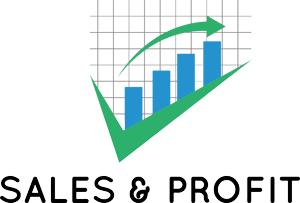Table of Contents
When we talk about sales, there’s this whole spectrum of strategies and techniques out there.
But one that’s been gaining a lot of traction, especially in today’s dynamic market, is consultative selling.
So, what exactly is consultative selling?
What is Consultative Selling?
Consultative selling is a sales approach that prioritizes relationships and open dialogue to identify and provide solutions to a customer’s needs. It is a sales methodology that centres around the customer and their needs, rather than just pushing a product or service.
The primary goal is to establish trust and rapport, understand the customer’s business, and then offer solutions that meet their specific needs.
The Evolution from Traditional Selling to a More Consultative Approach
Over the years, there’s been a shift.
A shift from the hard-selling approach where it’s all about closing the deal, to a more consultative approach.
This is mainly because customers today are more informed. They have access to a plethora of information right at their fingertips.
So, pushing a product or service just doesn’t cut it anymore.
Sales reps now need to be more of an advisors, guiding customers towards the best solution for their unique needs or challenges.
Importance of Consultative Selling in Today's Market
So, coming to the crux of the matter, why is consultative selling so important in today’s market?
According to a Leadsquared report – around 38% of salespeople want to concentrate on consultative selling.
Well, with the rise of informed buyers, as I mentioned earlier, there’s a need for a more personalized approach
An approach where the focus is on building genuine relationships, understanding the buyer’s world, and then offering tailored solutions.
It’s not just about making a sale; it’s about creating value for the customer and ensuring they come back for more.
Are Sales Challenges Stopping Your Revenue Growth?
Request a 100% free “no obligation” sales consulting call where we will understand your current sales challenges and help you with proven methods to boost your sales and grow your revenue.
(Already 100+ B2B companies have seen growth in their sales and revenue)
The Core Principles of Consultative Selling
1. Understanding Customer Needs
Now, diving deeper into the core of consultative selling, the first thing that really stands out is understanding customer needs.
A Salesforce report suggests that around 84% of B2B buyers would consider buying from a sales rep who understands their goals and challenges.
So It’s not just about what you think they need, but truly getting to the depth of their challenges and goals of the customer
Here are a few steps you can take to uncover customer’s needs
1. Actively Listening to Customers – In many sales interactions, there’s a lot of talking, but not enough listening.
In consultative selling, it’s the opposite
It’s one thing to hear what a customer is saying, but it’s another to actively listen.
It’s about picking up on those subtle cues, those unspoken concerns, and truly understanding the essence of their needs.
Ideally in a sales call it should be 70% of listening and 30% of talking
2. Asking the Right Questions – And then, there’s the art of asking questions.
Not just any questions, but the right ones that delve deep into customer challenges.
It’s about getting to the root of their pain points and uncovering those hidden needs.
In my experience asking open ended questions has always worked for me to uncover the customer’s needs
3. Researching Customer Needs – Now, why am I emphasizing research?
Because before you even start with those incisive questions, you need to have a foundation.
Researching customer needs, understanding their industry, the common challenges, and then offering relevant findings.
This not only positions you as an expert but also helps you start the conversation on the right foot.
The customer’s sees you like a subject matter expert.
2. Providing Value
So, coming to the next principle, and this is crucial – providing value.
Consultative selling is not about selling a product or service
it’s about offering them value which will lead to selling your solution
1. Offering Solutions, Not Products – In consultative selling, it’s all about giving a solution to their pain.
It’s not about pushing a product, but about understanding the customer’s challenge and developing a solution that truly addresses it.
2. Demonstrating Measurable Gains – After offering the solution to their challenges, you also need to show what the solution will do for them.
That’s basically showing the results or ROI your solution will produce in numbers or measurable quantity.
Some examples can be
- X% increase in ROI
- X% increase in productivity
- In X months you can see Y results
- X hours saved
3. Building Trust
Building trust is the cornerstone of consultative selling.
If a customer don’t trust a salesperson they will not buy from him, even if a reduced price is offered.
A study from Dale Carnegie says that – 71% of customers would buy from a salesperson they trust rather than the once who gave them a lower price.
Building trust means going beyond the sales pitch.
It’s your consistent actions, transparent communication, and delivering on promises.
It’s about showing the client that you’re not just in it for the sale, but for their success.
1. Establishing a Trusting Relationship – Trust isn’t built overnight.
It’s your consistent actions of showing the customer that you’re not just here to sell your products, but actually to help create a positive impact in the customer’s world.
2. Positioning as an Advisor – This is key in consultative selling,
You’re not just a salesperson, you’re an advisor, a guide, someone the customer can turn to for genuine advice.
3. Knowledge-Based Trust – Now, why am I emphasizing this? Because its about showing the customer that you know your stuff
Your knowledge about your solution, industry trends, best practices, etc will position yourself as a trusted consultant and not an ordinary seller
Being a Co-Founder of Sales & Profit I always encourage my sales team to add value in every client interactions. And after every interaction your credibility should go up
4. Collaborative Approach
Usually when you’re doing consultative selling the customer dosen’t know what solution they need
So you as a seller need to work with the customer, understanding their needs, and then co-creating a solution that truly meets those needs.
5. Solution-Oriented Approach
Now, why this is important?
Because as salespersons we always think about selling our product/ service
But in consultative selling, It’s not about pushing a product or a service.
It’s about listening to the customer, understanding their pain points, and then offering a solution that truly addresses those pain points.
Consultative Selling VS. Traditional Selling
When we dive deep into the world of sales, there’s this evolution that’s hard to ignore.
Over time, sales techniques have, well, adapted, especially with the changing behaviors of consumers and the ever-competitive market landscape.
So lets see what has changed from the traditional sales techniques to consultative selling approach
Customer-Centric vs. Product-Centric
Consultative Selling – It’s primarily customer-centric. It’s all about understanding the unique needs, challenges, and goals of the customer and then offering tailored solutions.
Traditional Selling – Its more often product-centric, focusing on the features and benefits, often with a one-size-fits-all approach.
Value Proposition vs. Feature Proposition
Consultative Selling – The value proposition is tailored. It’s about addressing the specific needs and challenges of the customer, aiming to provide real value.
Traditional Selling – Usually present a fixed feature proposition, emphasizing more on what the product does rather than how it solves the customer’s problem.
Relationship Building vs. Transactional Approach
Consultative Selling – Its all about building long-term bonds with customers. It focuses on trust, credibility, and ongoing value.
Traditional Selling – Its more transactional, more about closing the sale without diving deep into building a genuine relationship.
Educational Engagement vs. Persuasive Pitching
Consultative Selling – Its about educating the customer, offering insights, and helping them make an informed choice.
Traditional Selling – It involve persuasive pitching, trying to convince the customer with a scripted sales pitch.
Collaborative Problem Solving vs. Direct Selling
Consultative Selling – Here it’s a partnership. The salesperson collaborates with the customer, identifies problems, and works together towards a solution.
Traditional Selling – It’s more about direct selling, you have a product, the customer has a requirement and that leads to a sale.
Long-Term Approach vs. Immediate Sale
Consultative Selling – It’s a long-term approach. You need to build a relationship with the customer, dive deep into the customer’s world, understand their pain points and then guide them towards the solution.
Traditional Selling – It focuses on the here and now, the immediate sale, often overlooking the long-term value.
Feedback-Driven Improvement vs. Static Sales Process
Consultative Selling – It’s about continuous improvement in the sales process and offerings.
Traditional Selling – It’s often follow a static process, without much room for adaptation based on customer feedback.
Knowledge-Based Trust vs. Authority-Based Trust
Consultative Selling – Here trust is built on knowledge and consistent actions.
Traditional Selling – Trust might be sought through authority or brand reputation alone.
Steps Involved in Consultative Sales Process
1. Research
Research is the stepping stone before even initiating a contact with a customer.
This means finding out basic stuff about the company you’re selling to like
- What do they do?
- Who are their competitors?
- What tools or services are they already using?
- Who all will be involved in the decision making process?
- Your past customer in similar space
LinkedIn can be a goldmine of information. Their company website, too, can offer insights.
Delve into industry-specific content to understand the broader context in which they operate.
The intention here is to determine if the customer is a right fit for your solution.
2. Initiating the First Contact
Well, initiating that first touchpoint, be it a call, an email, or perhaps a face-to-face interaction, it’s more than just a mere introduction. It’s your golden ticket, your foot in the door.
Now, why am I emphasizing this? Because this initial outreach sets the tone.
It’s where you spark curiosity, where you lay the groundwork for a potential partnership.
Approach this with a genuine intent to understand, not just to pitch
Frame your conversation as a dialogue, not a monologue.
It’s about them, their needs, their aspirations.
3. Uncovering Customer Needs through Questions
In consultative sales usually the customer has a pain, but has still not recognized their need for a solution
So by asking the right “Open-ended Quesitons” you can actually uncover their needs
A technique that I’ve found success with is utilizing SMART Questioning Techniques.
SMART (Specific, Measurable, Action-oriented, Related, and Time-bound) isn’t just a fancy acronym. It’s a way to ensure that your questions are on point.
Specific: Questions that are precise and to the point. They aim to get a clear answer without any ambiguity.
Example: “Can you detail the specific challenges you’re facing with your current sales process?”
Measurable: These questions aim to get quantifiable answers. It’s about numbers, metrics, something that can be measured.
Example: “How much time does your team currently spend on lead generation each week?”
Action-oriented: These questions drive action. They’re about understanding what the customer has done or is planning to do.
Example: “What steps have you taken so far to address the challenges in your sales funnel?”
Related: Now, these questions, they’re all about relevance. They ensure that the conversation stays on track, that it’s related to the main topic.
Example: “How does the current challenge impact your overall sales targets?”
Time-bound: Time, it’s of the essence. These questions aim to understand the timelines, the urgency.
Example: “By when are you aiming to implement a solution to this challenge?”
4. Educating Your Prospect
Consultative selling is not just about selling. It’s about educating, enlightening, and empowering the customer.
Providing insights, shedding light on how your solutions address the needs, and also sharing some industry best practices.
I always say this to my sales team – “In consultative selling, you are the doctor and your client is the patient. You need to understand what pain they have and accordingly suggest the right medicine (your solution) that will cure their pain”
One of our service i.e sales consulting services is a best example of educating customers and taking the consultative selling approach.
When we discuss sales consulting with our clients, they usually don’t know what problem is causing them unable to achieve desired sales results.
We then go ahead with educating them about their organization and what needs to be fixed.
5. Proposing Tailored Solutions
Now that you’ve asked a thoughtful set of questions, actively listened to your prospect’s answers, and begun to develop your relationship by educating them.
It’s time to figure out how you can specifically help them
Crafting Solutions Aligned with Success Metrics: Every buyer has metrics, benchmarks, goals and the soluton..
It should align with these. It’s about ensuring that the solution isn’t just a solution, but the right solution.
Providing Quantifiable Benefits: Numbers, they don’t lie. Demonstrating how the solution addresses both financial and operational challenges
Showing the quantifiable benefits can make a world of difference. It’s about showing the real value.
Demonstrating Past Successes: Past performance, it’s an indicator of future success. Showing how similar challenges were resolved for other clients, sharing success stories, it can build trust, credibility, and confidence.
Sell the Outcome: Consultative selling is never about the features of products/ services. It’s about the outcome or results the solution will get
Since you have uncovered customers’ needs, pain and concerns, now its the time to show how your solution will address those.
6. Building and Nurturing Relationships
Salesforce published a State of the Sales Report which highlighted that – “Post pandemic almost 88% sales reps understand the value of building long term relationship with the client”
While understanding needs and offering tailored solutions are pivotal, there’s an underlying element that often becomes the linchpin of closing deals: building and nurturing relationships.
Now, why is this so crucial?
Understand that consultative selling isn’t a sprint; it’s more of a marathon.
It’s not about that one-time transaction but fostering a bond that stands the test of time.
When you invest in building a relationship, you’re essentially telling your customer, “I’m here for the long term engagement. I’m not just interested in today’s sale but in your ongoing success.”
But how does this help in closing deals?
Well, when customers feel valued and understood, when they recognize that you’re not just chasing a commission but genuinely care about their challenges and aspirations, trust is established.
And in the world of sales, trust is the golden ticket. It reduces resistance, eases concerns, and paves the way for open, honest communication.
Moreover, nurturing these relationships means continuous engagement. It’s about checking in, offering additional insights, or simply asking for feedback.
This consistent touchpoint ensures that you’re always top of mind, and when the time comes for them to make a decision, guess who they’ll turn to?
7. Post-Sale Engagement
After the sale, the journey it continues.
It’s about ensuring satisfaction, providing support, and exploring new opportunities.
Following up, ensuring satisfaction, and understanding any new challenges arising.
It’s all part of the post-sale engagement.
This give you further opportunities to up sell and cross sell.
Essential Skills for Consultative Selling
1. Active Listening
Active listening, it’s more than just an act; it’s an art.
In the bustling cacophony of the business world, the ability to truly listen, to genuinely tune into what the customer is saying, is invaluable.
It’s not just about the words spoken, but the emotions, the undertones, and the subtle hints that lie beneath.
Active listening requires undivided attention, a keen ear, and a genuine interest in understanding the customer’s world.
2. Empathy
Empathy is about feeling what your customer feels, understanding their challenges, aspirations, fears, and their dreams.
In the realm of consultative selling, empathy is the bridge that spans the gap between the seller and the buyer.
It’s not just about understanding the customer’s needs, but about resonating with their emotions, their journey.
And when you approach sales with empathy, you’re not just selling a product or a service; you’re offering a solution to improve your customer’s life
3. Problem-Solving
At its core, consultative selling is about solving problems. You are deep diving into the customer’s challenges, understanding the intricacies, and crafting solutions that truly resonate.
Problem-solving requires a keen analytical mind, a solution-oriented approach, and a dash of creativity.
4. Research Skills
In the vast ocean of information, research is the compass that guides the way.
It’s about diving deep and unearthing insights, staying updated with the latest trends, market dynamics, and industry nuances.
Research equips you with knowledge, insights and with a deeper understanding of the customer’s world.
And in consultative selling, knowledge is power.
It positions you as an expert, as a trusted advisor, and as someone who truly understands the industry, the challenges, and the solutions.
5. Presentation Skills
Understanding a client’s needs and crafting tailored solutions is just half the battle.
The other half? Effectively communicating those solutions, and this is where presentation skills come into play.
Because in consultative selling, you’re not just offering a product or service; you’re painting a picture, telling a story of how your solution can transform the client’s current situation.
A well-structured, clear, and engaging presentation can make all the difference.
It can turn a skeptical prospect into a convinced customer. It’s your chance to showcase not just what you’re offering, but why it’s the perfect fit for them.
It’s about highlighting the benefits, demonstrating the value, and doing so in a manner that resonates with your audience.
5. Adaptability
The business landscape, it’s ever-evolving, ever-changing. And in this dynamic world, adaptability is the sail that catches the wind, propelling you forward.
It’s about staying agile, about pivoting when needed, about meeting the changing needs of the customers.
Adaptability requires an open mind, a willingness to learn, and a zest for embracing change.
In consultative selling, adaptability ensures that you stay relevant, that you continue to deliver value, that you remain in sync with the customer’s evolving world.
6. Feedback Reception
No solution is perfect and sometimes it can happen that your solution did not completely meet the client’s expectations.
That’s where the ability to take constructive feedback plays an important role.
It’s about listening to the customer’s feedback, understanding their perspective, and using it as a tool for continuous improvement.
This will ensure that the solution s aligned with the customer’s needs, expectations, and aspirations.
Implementing Consultative Selling in Your Organization
So how do you ensure that your sales teams are not just equipped but are truly aligned with this customer-centric approach?
Training and Developing Sales Teams
Conducting sales training programs equips your sales teams with the tools, techniques, and skills required for consultative selling.
But it shouldn’t be just theoretical knowledge.
It’s should be practical insights, live case studies, roleplays, and applying the learnings in real world scenarios.
Measuring the Impact of Consultative Selling
Measurement, it’s the compass that ensures you’re on the right track.
Implementing consultative selling is not just about training; it’s about seeing the results, the tangible impact.
Key Performance Indicators (KPIs), customer feedback, and repeat business, these are just some of the metrics that can be used to measure the impact.
And it’s not just about numbers.
It’s about success stories where consultative selling made a difference, where it created value and recognizing the sales team’s wins
Continuous Feedback and Iteration
Feedback, it’s the beacon that guides the way.
It’s about understanding what’s working, what’s not, and what can be improved. Implementing consultative selling in your organization is not a one-time task; it’s an ongoing journey.
It’s about continuously seeking feedback from your sales teams, from your customers, from the market.
It’s about iterating, about refining the approach, about ensuring that it remains aligned with the evolving needs of the customers.
Regular feedback sessions, open forums, surveys, these are just some of the tools that can be used to gather feedback and ensure that the consultative selling approach remains relevant, impactful, and truly resonates with the customer’s world.





